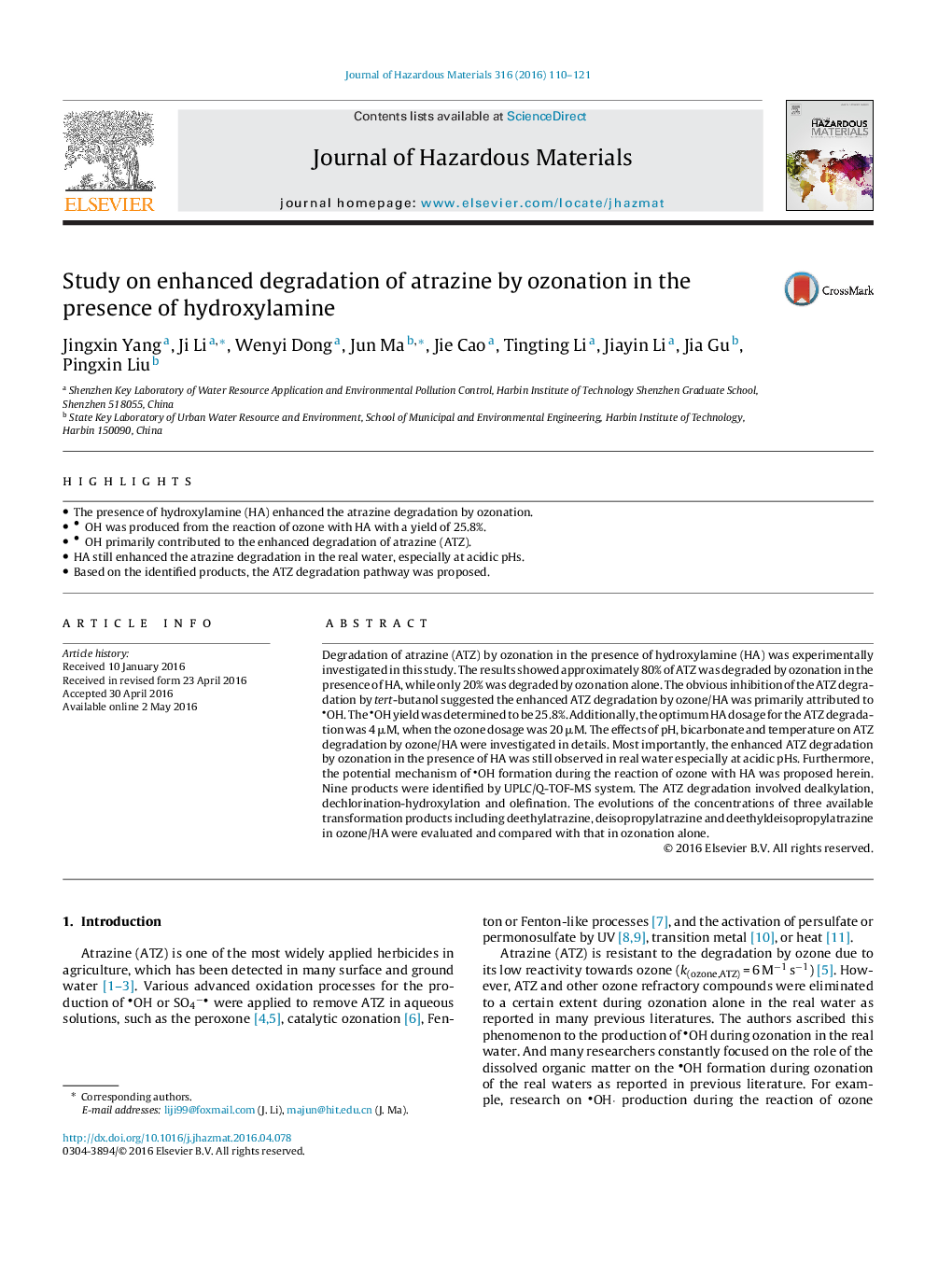| Article ID | Journal | Published Year | Pages | File Type |
|---|---|---|---|---|
| 6970260 | Journal of Hazardous Materials | 2016 | 12 Pages |
Abstract
Degradation of atrazine (ATZ) by ozonation in the presence of hydroxylamine (HA) was experimentally investigated in this study. The results showed approximately 80% of ATZ was degraded by ozonation in the presence of HA, while only 20% was degraded by ozonation alone. The obvious inhibition of the ATZ degradation by tert-butanol suggested the enhanced ATZ degradation by ozone/HA was primarily attributed to OH. The OH yield was determined to be 25.8%. Additionally, the optimum HA dosage for the ATZ degradation was 4 μM, when the ozone dosage was 20 μM. The effects of pH, bicarbonate and temperature on ATZ degradation by ozone/HA were investigated in details. Most importantly, the enhanced ATZ degradation by ozonation in the presence of HA was still observed in real water especially at acidic pHs. Furthermore, the potential mechanism of OH formation during the reaction of ozone with HA was proposed herein. Nine products were identified by UPLC/Q-TOF-MS system. The ATZ degradation involved dealkylation, dechlorination-hydroxylation and olefination. The evolutions of the concentrations of three available transformation products including deethylatrazine, deisopropylatrazine and deethyldeisopropylatrazine in ozone/HA were evaluated and compared with that in ozonation alone.
Related Topics
Physical Sciences and Engineering
Chemical Engineering
Chemical Health and Safety
Authors
Jingxin Yang, Ji Li, Wenyi Dong, Jun Ma, Jie Cao, Tingting Li, Jiayin Li, Jia Gu, Pingxin Liu,
